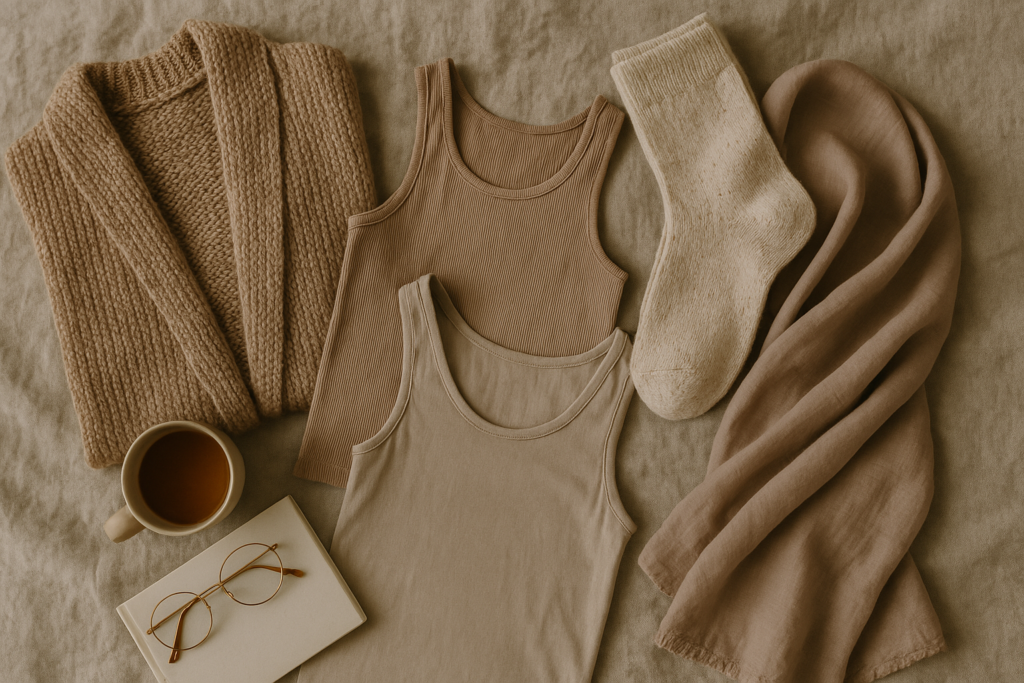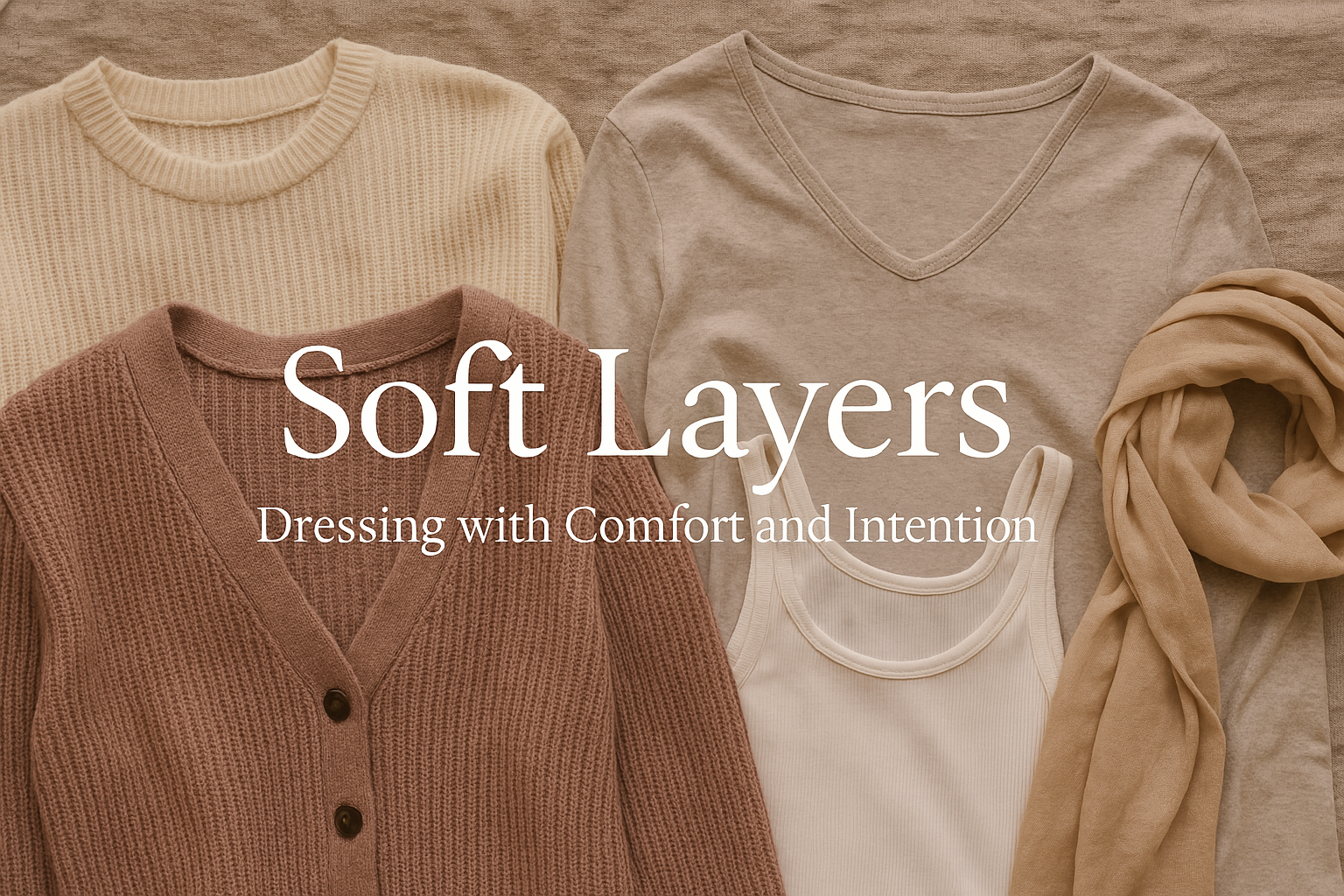Introduction: Dressing as an Act of Care
The act of dressing transcends mere functionality; it embodies a profound expression of self-care and intention. Clothing serves as a shield, a fabric touch that evokes feelings of comfort, security, and support, particularly in moments when vulnerability surfaces. During times of uncertainty or stress, the way we curate our wardrobe can significantly influence our emotional state, allowing us to foster a nurturing environment both internally and externally.
When selecting our outfits, we often consider the implications of our choices not just on physical appearance but also on our psychological well-being. The textures of soft fabrics against the skin can create an immediate sense of coziness, establishing a comforting cocoon. This subjective experience highlights the importance of prioritizing materials that not only appeal aesthetically but also align with our emotional needs. Embracing garments crafted from breathable, gentle materials can enhance our comfort level, particularly in slow moments of reflection or during a hectic day.
Moreover, dressing with intention allows for a deeper connection to our bodies and the sentiments we wish to convey. By being mindful of what we wear, we cultivate an understanding of our inner selves and advance a personalized style that resonates with our mental state. This aspect of dressing invokes a nurturing approach, where each item chosen serves as a reminder of care, not only for our appearance but for our overall well-being.
As we delve deeper into the philosophy of dressing intentionally, it becomes clear that the fabrics we choose can pave the way toward achieving a more serene existence. The idea of dressing as an enduring act of care invites reflection on one’s clothing choices while promoting a holistic connection between the self and the outward representation of that self.

What is Soft Layering?
Soft layering is an intentional approach to dressing that transcends mere fashion trends, rooted in the desire for comfort and personal expression. At its core, soft layering is about choosing clothing that feels good against the skin and allows for flexibility throughout the day. The essence of this style lies in the thoughtful selection of tactile and breathable materials such as cotton, linen, bamboo, and cashmere, which provide both comfort and aesthetic appeal.
The practice of soft layering involves combining multiple garments to create a harmonious ensemble that is not only visually pleasing but also functional. Each layer is designed to act almost as a second skin or light armor, wrapping the wearer in a cozy embrace while allowing for ease of movement. This concept recognizes the nuances of daily life, where varying temperatures and activities may require us to adjust our clothing accordingly. By layering, we can seamlessly transition from one environment to another, maintaining both comfort and style.
Soft layering is characterized by its inviting texture, encouraging individuals to engage in personal customization. This approach fosters an intimate relationship with clothing, where each layer can be modified or removed based on personal preference and comfort levels. The goal is to create a look that feels effortless and authentic while prioritizing the user’s needs over the desire to impress others. This practice ultimately promotes a sense of well-being, allowing for a greater appreciation of one’s style and an invitation to express individuality through the art of layering.
How to Layer with Intention: Key Tips
Layering clothing is not merely a fashion statement; it can also be a method of promoting comfort and ensuring personal expression. To begin layering with intention, it is essential to start by tuning into your feelings each day. Ask yourself how you are feeling—are you cold, tired, or perhaps seeking a soothing wrap? These emotional and physical cues can guide your choices, allowing you to dress accordingly. By prioritizing your body’s needs, you embrace both comfort and functionality in your wardrobe.
Next, consider the textures of your clothing. Textiles have a profound impact on our emotional state, and incorporating diverse textures can create a comforting experience. For instance, incorporating soft knits, cozy fleece, or smooth silks can help enhance your comfort. Letting texture lead your choices can help you intuitively select layers that not only feel good but also allow for ease and movement throughout the day.

Color also plays a crucial role in how we feel while dressed. By opting for soothing color palettes, such as soft pastels or earthy tones, you can foster a sense of calm and grounding. These gentle hues contribute to a layered ensemble that resonates with personal well-being and helps reduce anxiety associated with dressing. Instead of overthinking what outfits to put together, focus on how the pieces feel against your skin and encourage emotional harmony.
Ultimately, if an outfit feels good, it will fit beautifully, regardless of style trends or expectations. Embrace the practice of mindfulness in your dressing routine. By consciously choosing layers that cater to your body’s needs and preferences, you create a wardrobe that reflects your individuality while enhancing your comfort.

Everyday Soft Layer Looks: Real-Life Inspirations
Dressing with soft layers provides a unique blend of comfort and style, making it a versatile choice for various occasions. One compelling example of this layering technique is the combination of a crisp white cotton shirt layered beneath a ribbed tank top. This pairing not only enhances the visual appeal but also offers practical warmth without sacrificing comfort. The soft texture of the cotton shirt complements the snug fit of the tank, creating a balanced silhouette that can be paired with soft trousers for a laid-back yet polished look.
Another enticing outfit idea includes a flowy dress layered with a lightweight duster cardigan. This combination exemplifies the beauty of soft layers, where the ethereal quality of the dress is grounded by the structure of the cardigan, providing both comfort and elegance. The duster can be worn open to showcase the dress or belted at the waist for a more defined shape. Such a look allows for effortless transitions from day to night, making it versatile for dining out or attending casual gatherings.
To cultivate creativity in personal style, experimenting with different textures and weights of fabric can yield exciting results. For instance, pairing a loose-fitting, soft fleece pullover with tailored pants offers a unique contrast, blending casual comfort with a touch of sophistication. Incorporating softer pieces with more structured items illuminates the essence of intentional dressing—where comfort does not compromise elegance.
Ultimately, there are no strict guidelines when it comes to soft layering. The key lies in individual comfort and intuition. Embracing this method encourages wearers to play with color, fabric, and silhouette, leading to a distinctive style that resonates with personal identity. Thus, daily interactions with soft layers can inspire confidence and creativity in one’s wardrobe choices.







